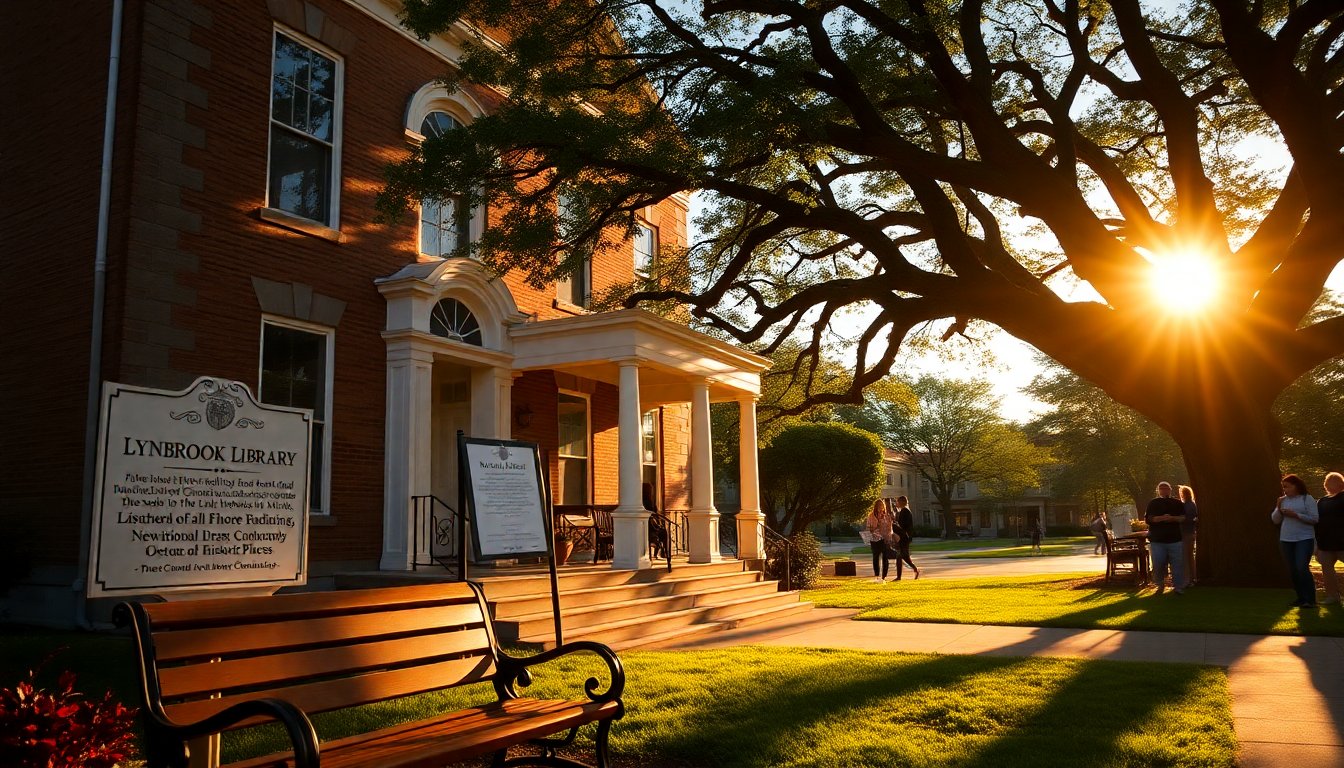Table of Contents
The Lynbrook Library, a significant historical landmark on Long Island, has officially been added to the National Register of Historic Places. This recognition follows years of dedication from its staff, who uncovered the library’s rich history, including its connections to women’s suffrage and a notable arson incident. As we explore the library’s compelling story, we reveal its importance to the community and the remarkable events that have shaped its legacy.
The Origins of Lynbrook Library
Founded during a period when education was gaining prominence, the Lynbrook Library was established by the Friday Club, a local women’s suffrage organization. Founded in 1913, the club aimed to enhance educational opportunities and quickly garnered community support. Their efforts led to the hiring of Hugh Tallant, a distinguished architect known for his work on the Brooklyn Academy of Music and the New Amsterdam Theatre. Tallant’s design for the library, which features elements inspired by Athena, the Greek goddess of wisdom, reflected the club’s commitment to education. The library became a vital hub for knowledge and community engagement, offering resources and a gathering space for residents.
In 1956, the library encountered a devastating event when a custodian, seeking to cover up a theft, set fire to the building. The damage from this incident amounted to approximately $1.1 million in today’s currency. However, the community’s support enabled the library to be rebuilt, reaffirming its status as an essential community center.
A Community Anchor Through the Years
Following its reconstruction, the Lynbrook Library flourished, adapting to the evolving needs of Nassau County’s residents. The influx of city dwellers seeking suburban tranquility transformed the library into a vibrant center of learning. By 1992, the library’s growing popularity necessitated an expansion, ensuring it could continue to serve the community effectively and preserve its cherished location.
As the library’s profile grew, so did its historical significance. The recent recognition by the National Register of Historic Places honors not only the building’s architectural value but also its integral role in the community’s cultural landscape. Director Robyn Gilloon expressed pride in this achievement, considering it a well-deserved recognition for a building that has been a pillar of education and community spirit for nearly a century.
The Journey to Recognition
The path to securing a spot on the National Register was challenging. Longtime reference librarian Kathleen Curran dedicated four years to the application process, meticulously researching and documenting the library’s history. This effort uncovered numerous lost stories, showcasing the library’s evolution and the significant events that shaped its legacy.
As Gilloon noted, the community’s response to the library’s listing has been overwhelmingly positive. Many residents, including those who have relocated, have reached out to share their memories and experiences within the library’s walls. This nostalgic connection highlights the library’s importance as a community anchor, fostering belonging and continuity across generations. The recognition serves not only as a celebration of the past but also as a reaffirmation of the library’s future role, inviting new visitors to engage with its rich history.
In conclusion, the Lynbrook Library exemplifies the resilience of community institutions. Its recent inclusion on the National Register of Historic Places represents a significant achievement, celebrating both its architectural beauty and its essential role in promoting education and community spirit. As it prepares to celebrate its centenary in 2029, the library is poised to remain a cherished resource for generations to come.


